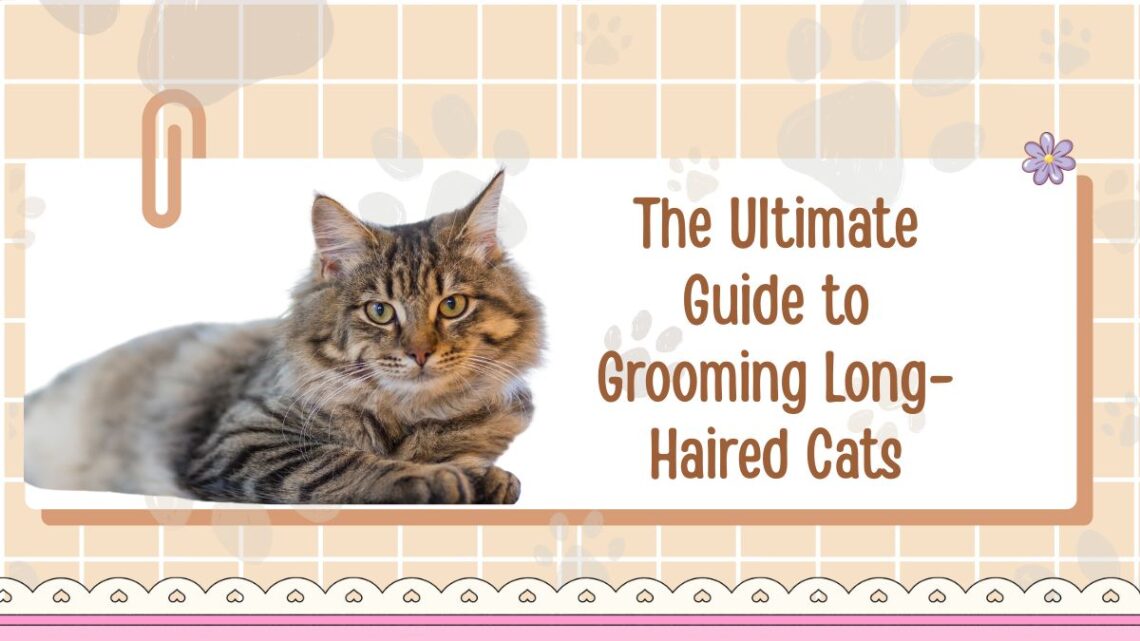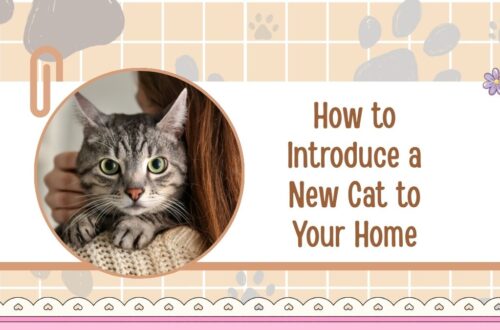A beautiful, flowing coat is one of the hallmarks of a majestic long-haired cat — but that luxury comes with responsibilities. Whether you have a Maine Coon, a Persian cat, a Norwegian Forest Cat or any long-haired feline companion, grooming is not just about appearance.
Regular care of their coat, skin, and overall hygiene contributes to their comfort, health and even lifespan. In this full-length guide we’ll cover everything: why grooming matters, how often to groom, what tools to use, how to manage mats and tangles, diet and nutrition for coat health, bathing basics, and how to build a grooming routine your cat will tolerate.
We’ll also include a detailed table summarising key information at a glance. By the end you’ll feel empowered to give your long-haired cat the grooming support it deserves.
Why Grooming Matters for Long-Haired Cats
While all cats benefit from grooming, long-haired varieties face extra challenges:
- Their lengthy fur tends to trap loose hairs, creating clumps and mats that can pull at skin and irritate.
- Without intervention, mats may become so tight they impair circulation, hide wounds or parasites, and lead to infection.
- Long-haired cats often ingest more hair via self-grooming, raising the risk of hairballs and digestive issues.
- Grooming is also a health-check opportunity: by brushing you can monitor skin condition, lumps, fleas, ticks, or changes early.
- Establishing a grooming routine strengthens the bond between you and your cat, making the process more tolerable for both.
In short: grooming is not just cosmetic—it’s essential care.
How Often & How Long Should Grooming Sessions Be?
Getting the frequency right helps avoid overwhelming your cat or letting things slide. Here’s a breakdown:
- For long-haired cats, experts recommend daily grooming or every single day if possible to prevent mats.
- If daily isn’t feasible, aim for at least 2-3 times per week brushing and combing.
- A session can be short (5-10 minutes) when your cat is young or not used to grooming; gradually build up as they get comfortable.
- Schedule grooming at a consistent time each day (or similar days) so it becomes a routine your cat expects rather than a surprise.
- Always pick a calm, quiet environment to minimise stress. Loud noises, other pets, or a rushed approach can make it worse.
Tools & Products You’ll Need
Having the right grooming tools makes all the difference. Below is a table summarising key items and their uses:
| Tool/Product | Purpose | Notes |
|---|---|---|
| Wide-toothed metal comb | Detangling and gently teasing out mats | Choose rounded tines to avoid skin trauma. |
| Slicker brush | Smooth out long coat, remove loose underfur | Good for long-haired breeds. |
| De-shedding tool | Reduce shedding volume, remove dead undercoat | Use carefully to avoid skin irritation. |
| Mat removal rake / scissors (blunt-tipped) | Deal with persistent tangles or mats | Use only if confident; otherwise seek professional help. |
| Cat-safe shampoo & conditioner | For occasional baths to reduce oil/dirt buildup | Long-haired cats may need bath less frequently |
| Treats / reward system | Encourage positive association with grooming | Helps especially when the cat is resistant. |
| Grooming station or quiet area | Dedicated space for grooming routine | Helps the cat feel safe and relaxed. |
Step-by-Step Grooming Routine
Here’s a structured routine you can follow:
Preparation
- Choose a quiet room at a time your cat is calm (post-play or after a meal).
- Gather all tools in advance so you don’t interrupt the session.
- Let your cat sniff and inspect the brushing tools so they’re familiar and less threatening.
Brushing & Combing
- Start at the head and neck, brushing in the direction of fur growth. Then go to chest, abdomen, behind ears, legs, tail.
- Use the wide-toothed comb to identify any tangles or mats. For gentle teasing, hold the fur close to skin with one hand and comb with the other to reduce pulling.
- Use the slicker brush for overall coat smoothing and to remove loose fur.
- Use the de-shedding tool as needed but limit its use in sensitive areas to avoid skin irritation.
Tackling Mats or Tangles
- If you find a small mat, apply a bit of detangling spray (cat-safe) or hold the fur and comb gently from surface to base
- For large or tight mats: if you’re confident, use blunt-tipped scissors or a mat removal tool very carefully. Preferably seek a professional groomer if unsure.
- Never pull hard at mats: that can pull skin and cause pain or bleeding.
Bathing (Occasionally)
- Bathing is not frequent for most cats; only when truly dirty, oily, or as recommended by your vet.
- Use lukewarm water, cat-safe shampoo, avoid human shampoos. Protect ears, eyes. Rinse thoroughly.
- Dry gently: wrap in towel, and if your cat tolerates, use a blow dryer on the lowest heat after brushing. Pay attention to undercoat and longer fur to prevent shrinkage of mats.
Finishing Touches
- Trim nails if needed and check paw pads for any hair growth between toes (common in long-haired cats).
- Clean the area around the rear: sometimes long fur sticks to stool or debris so brief sanitary trim helps hygiene.
- Reward your cat with a treat, praise, or gentle petting to build positive associations.
Diet, Nutrition & Health Factors for Coat Quality
Grooming helps maintain appearance and comfort, but internal health plays a huge role in coat quality too:
- A high-quality protein diet supports hair growth and coat condition, especially with sufficient taurine (an amino acid cats require).
- Omega-3 fatty acids (from fish oil) help promote shiny, healthy fur, reduce shedding and improve skin health.
- Underlying health issues (thyroid problems, hormonal imbalances, skin diseases, parasites) can affect coat and grooming acceptance. If you notice dull fur, excessive shedding, bald patches or mats, check with a vet.
- Environmental: humidity, indoor versus outdoor, seasonal shedding cycles matter — long-haired cats may shed more and require more frequent grooming in warmer months.
Special Considerations & Breed-Specific Tips
- Some long-haired breeds have dense undercoats (e.g., Maine Coon, Norwegian Forest Cat) which trap loose hairs and increase matting risk — so frequent grooming is even more critical.
- Older cats or overweight cats may be less able to self-groom effectively and may require extra help from you. Be patient and skip or shorten sessions if they show signs of stress.
- Cats that resist grooming: start slowly with 1-2 minutes sessions, use gentle brushing, reward them generously. If they show pain or aggression, check for underlying issues.
- During seasonal changes (spring/summer), long-haired cats may shed more—so increase grooming accordingly.
- For cats living in warm climates, you may consider a professional “lion cut” (shorter coat) but only after vet/groomer consultation: cats still need protection from sun and the skin may be more exposed.
Common Mistakes to Avoid
- Skipping grooming for too long: results in painful mats, skin infections, hygiene problems.
- Using the wrong tools: plastic combs may create static; brushing against fur direction can pull skin.
- Oversedating yourself by long sessions: keep it short and calm. If your cat resists, reduce session time and build up gradually.
- Using human shampoos or strong scents: cats have sensitive skin and a strong sense of smell. Always use cat-safe products.
- Attempting aggressive trimming or shaving yourself without experience: you risk cutting skin or causing trauma. Seek a professional groomer when needed.
- Quick Reference Summary for Long-Haired Cat Grooming
| Area | What to Do | Frequency |
|---|---|---|
| Brushing/combing | Use wide‐tooth comb + slicker brush; go head to tail, chest, belly, tail. Handle mats gently. | Daily if possible; minimum 2-3 times/week |
| Detangling mats | Use mat rake or scissors carefully; hold fur close to skin; seek pro if large mats. | As soon as you spot tangles |
| Bathing | Only when needed (sticky, oily, dirty); use cat shampoo; rinse and dry thoroughly. | Every 1-3 months (or as advised) |
| Nail & paw care | Trim nails, check hair between toes, clean paw pads. | Every 4-6 weeks or as needed |
| Diet & supplements | Ensure high-protein diet, add omega-3s, monitor coat health. | Ongoing daily nutrition |
| Health check | During grooming, check for skin lumps, parasites, bald patches, signs of discomfort. | At every session |
| Grooming environment | Calm, quiet room; gather tools ahead; keep sessions short; reward your cat. | Every grooming session |
Grooming a long-haired cat is far more than a cosmetic task — it’s a fundamental part of their health, comfort and your shared bond. With the right tools, routine, diet and patience, you can turn grooming into a pleasant ritual rather than a struggle. Daily or near-daily care helps prevent mats, reduces hairballs and keeps your cat’s coat radiant.
Monitor their skin, trim and clean where needed, and don’t hesitate to seek professional help if you encounter persistent mats or caused irritation.
Ultimately, your consistent care will reward you with a happier, healthier, more comfortable feline companion — one whose luscious coat is a sign of well-being, not neglect. Embrace the grooming routine, and you’ll both enjoy the process and the results.
FAQs
Start with very short sessions (1-2 minutes) in a calm environment. Show the brush, let your cat sniff it. Use gentle brushing and praise. Gradually increase time as they get comfortable. If you notice signs of pain (twitching, biting, hissing), stop and consult a vet — there may be underlying skin or health issues.
Shaving can be an option in certain cases (e.g., extreme matting or very hot climate) but it’s not a cure-all. Cats have thin skin and shaving can expose them to sunburn or skin problems. Also, the regrowth may be uneven, and you remove the protective long coat that helps regulate temperature. Always consult a professional groomer or vet before shaving.
Absolutely — a high-quality diet rich in digestible meat and key nutrients like taurine and omega-3 fatty acids supports healthy fur, reduces shedding and improves skin condition. Conversely, poor nutrition or underlying health issues can lead to dull fur, excessive shedding or bald patches.






